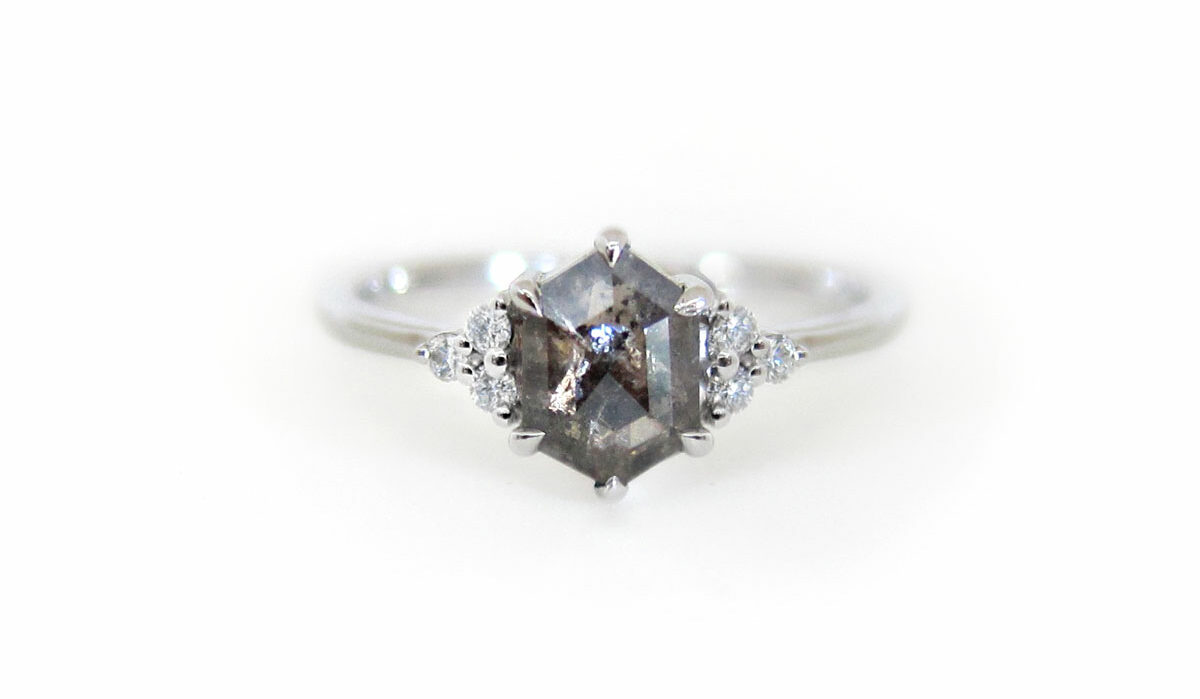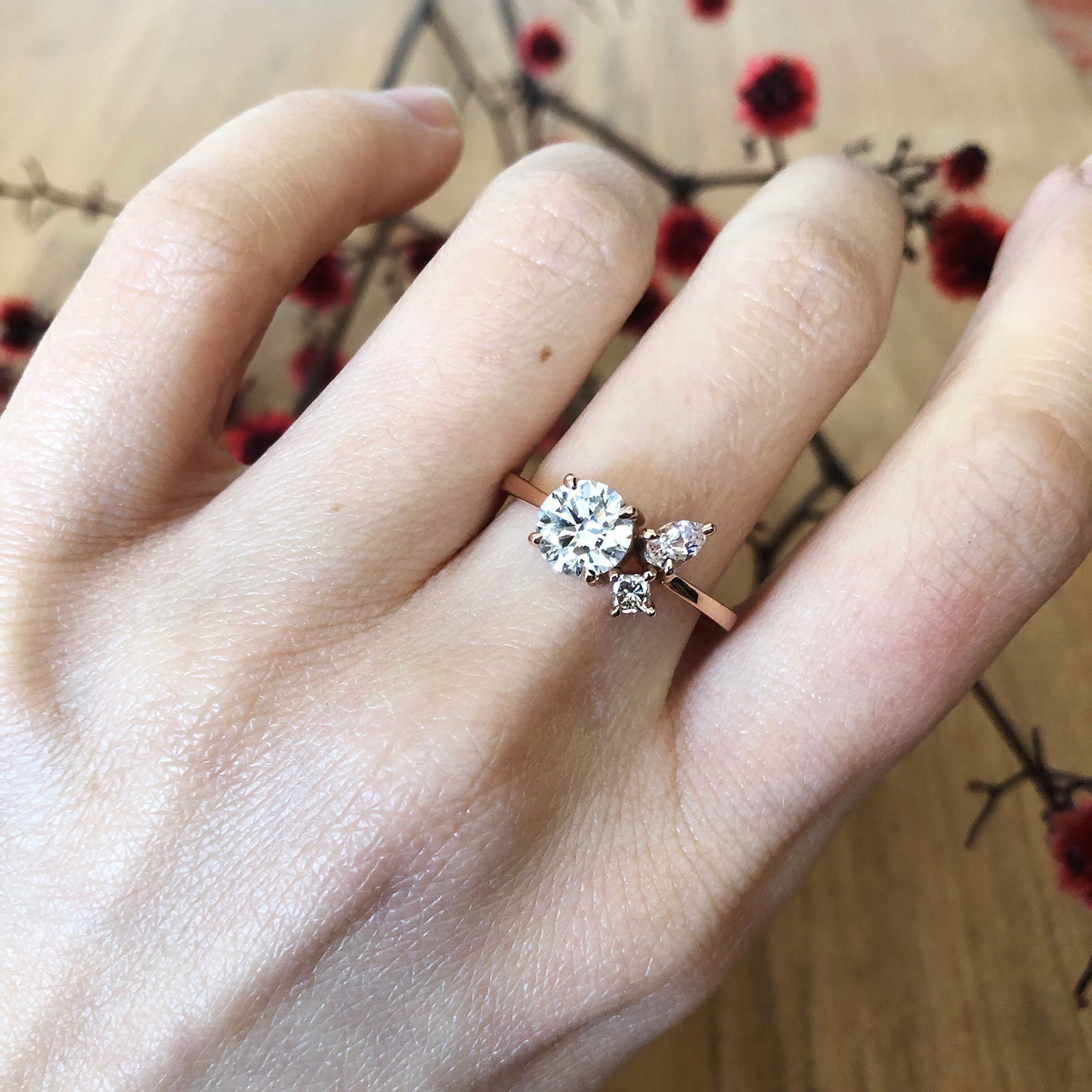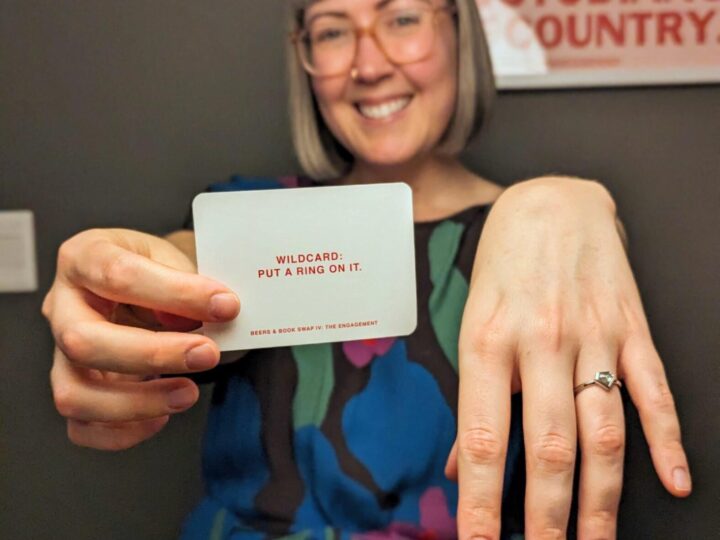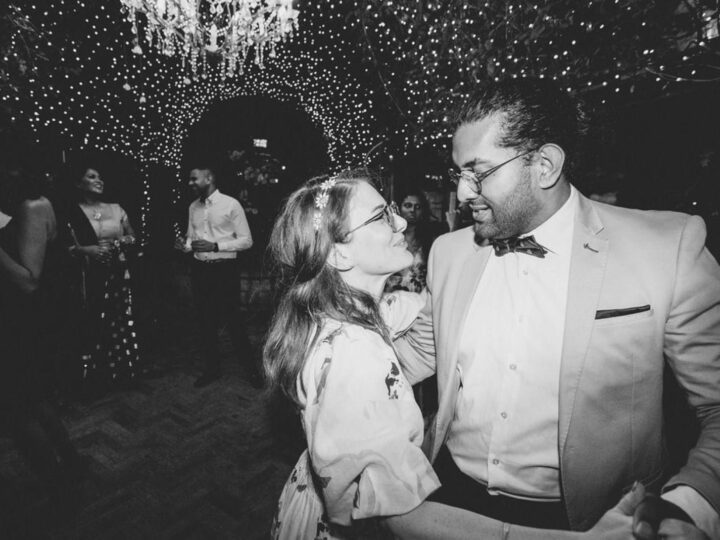What do you think of when I say “diamond engagement ring”?
Most people will imagine a sparkly round diamond in a claw setting. It’s a classic design you might have seen on your colleagues, your friends and strangers on the street.
But if you want to stand out from the same-same designs in glossy magazines and cheesy rom-coms, read on…
While a traditional white diamond can be beautiful, timeless and strong (it is the most durable gemstone after all) there are other options with all the brawn and none of the yawn.
Here are 4 ways to turn your engagement ring into a piece unlike any other.
Choose an alternative diamond shape
Other than the standard ‘round brilliant cut’, diamonds are available in a range of shapes including pear (teardrop), oval, princess (square), emerald (octagon) and more. Search a little further and you may also find shapes like kite, trilliant (triangle) and hexagon! A diamond with a distinctive shape is a great way to add interest to even the simplest design.

Consider a coloured diamond
White diamonds are just one of many stunning choices. Diamonds also come in colours such as champagne, cognac, yellow, grey, the rare pink diamond (and more).
Pressure and temperature treatments can also create colours such as blue, green, yellow and pink, although it’s important to make sure that any treatments are disclosed so you know what you’re getting.
Alternatively, do a complete 180 and pick a black diamond (also often a treated stone). Black diamonds are bold, edgy and blatantly anti-traditional – an easy way to turn the conventional engagement ring right on its head.

Think about a salt and pepper diamond
The fewer inclusions a diamond has, the more desirable (and expensive) it generally is. However a salt and pepper diamond is desired precisely for its imperfections.
Salt and pepper diamonds may have black and white speckles, fractures that reflect rainbow colours through the stone and opaque or transparent areas that give each gem an individual character.
Note that fractures that reach the surface of a diamond, or that pass through a large proportion of the stone, can make it more prone to chipping or breaking. Work with your jeweller to make sure that the diamond you choose is durable enough to stand the test of time.

Go with a different cut
Most modern round diamonds are precision cut to maximise sparkle (at least, that is the goal). In comparison, “old cut” antique diamonds feature fewer facets and less symmetry. They aren’t as sparkly, but they have an old world charm that gives your engagement ring a vintage vibe.
Another style to consider is the rose cut diamond – a diamond with a flat base and facets across a domed top surface. Rose cut diamonds often have less depth than faceted diamonds and are great if you want your ring to sit low and be less likely to catch on things.

Do something different with the ring
Remember that the diamond is just one part of the ring. If you’re loving the sound of a timeless white diamond, more power to you. You can still have a modern engagement ring that turns heads and starts conversations.
How?
Think of ways to subvert the format of the traditional engagement ring. Add asymmetry, experiment with colour, mix your metals or play with different shaped settings.
Book a jewellery consult and I’d be happy to go through some options with you.

So which alternative diamond is right for you?
When it comes down to it, the design of your ring is highly individual. Are you looking for something subtle and minimalist or bold and distinctive? Do you want a ring that sits up high or as low profile as possible?
I’m here to help. Send me three adjectives that you would use to describe yourself, your partner or your future ring and I’ll send you a recommendation.
And hey, diamonds aren’t the only option. if you’re not the diamond type, read more about non-diamond engagement rings.




